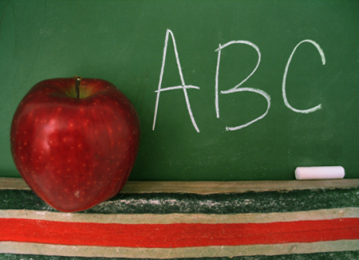NEWS RELEASE
CREDIT COUNSELLING SERVICES OF SAULT STE. MARIE
*************************
As August is upon us, the big box stores have rolled out their Back to School displays, ushering in the 2nd biggest shopping season of the year. The Back to School industry in the US is an $83.6 billion dollar deal, up from $75.8 billion last year.
Families with students heading off to College or University are expected to spend about $1,000 on back to school supplies, while families with children in elementary or high school are expected to spend in the neighbourhood of $700.
At Credit Counselling Services of Sault Ste. Marie and District, we often see these expenses put on credit cards with the thought of paying the bill off over time. Unfortunately, this allows the total cost of back to school shopping to grow.
Surprisingly, if you paid for your child’s entire back to school expenses of $1,000 on credit, and only paid the minimum payment, it would take an astounding 10 years to pay off the bill, plus and extra $979 in interest expenses (at an annual interest of 19.9 per cent).
Even paying $50 a month to the same bill, it will take you two years to pay off debt and cost an extra $225 in interest.
Here are a few tips to help you maximize your back to school budget.
Take an inventory
Especially for children going to elementary and high school, many of the supplies they had this past year will be useable this coming school year. Take stock of what your child has and only aim to replace those things that are worn out or missing.
This seems like a straight forward suggestion, but research by Deloitte suggest that this isn’t always the case. Families are expected to spend on average $104 covering just school supplies (pens, paper, notebooks, etc).
To get your children involved, get them to make a list of the supplies that they feel they will need for the upcoming school year. Use this list to identify what they already have and what they still need. This helps children feel involved in the process of purchasing their back to school supplies, but also opens the door to discussions around needs and wants.
Research before you head out
Recent surveys show that roughly 69% of parents are using the net to research back to school deals before heading out to purchase. There are a number of easy to use shopping apps, like Flipp, that help you sort through the local flyers, find the best deals on items, and stretch your back to school budget.
Plan your technology purchases carefully
Students going into high school or even post-secondary may be looking for a new computer. According to Deloitte, new technology purchases, across devices and platforms will be on average $561 for families who make these purchases.
This is another great opportunity to discuss needs and wants. Have your child make a list of what they need out of a computer, tablet, or phone. With this list, have your child do their research either online or in person.
If your child is drawn to a machine that is perceived as cooler than others, see how many of the must haves it checks off from the list they created. If it doesn’t meet their needs then encourage them to keep looking.
When buying new technology for your child, try to remember that what is new today may be obsolete in two to three years. Specifications are always changing, so know what your child will need and try to identify a few options online before hitting the stores.
A little bit of homework will go a long way in ensuring you get the right mix of a deal and computing power.
Look at Back to School as a year-long expense
By focusing on just what your children need for September and budgeting just for that, many other school related expenses are missed. Think about winter boots and jackets that need replacing, the lost lunch bag or backpack. What about pizza lunches, field trips, proms, and grad trips? Working these expenses into a school-year long budget will help you plan and avoid having to shell out money you were not expecting to spend.
Shop with your children
Back-to-school shopping is a great opportunity to teach fundamental money management skills. If you are shopping with older children who have some money of their own, allow them to pitch in on back to school shopping.
Discuss with them an agreed upon amount that you are willing to spend. If they want something more expensive, allow them to make up the difference. This will help them to understand the purchasing process and the value of money by allowing them to make safe financial decisions.
With younger children, allow them to hold the list and help you find the items. Explain the purchasing process, don’t let them just see you pay with debit or credit, but explain how that process works. When a child only sees adults using cards, they don’t fully grasp where the money is coming from, especially when put on credit.
Once the back to school dust has settled, tally up your total cost. Use this number as your guide for next year’s shopping so that you can start saving this year for next year’s expenses. For example, if you spent $1,000 on all back to school costs this year, you would need to start saving $83 a month.
It is a lot easier to come up with $83 every month then it is to come up with $1,000 in one month. By doing this, you can be sure to have the cash on hand to buy next year’s supplies, or pay off the credit card balance in full.
*************************
